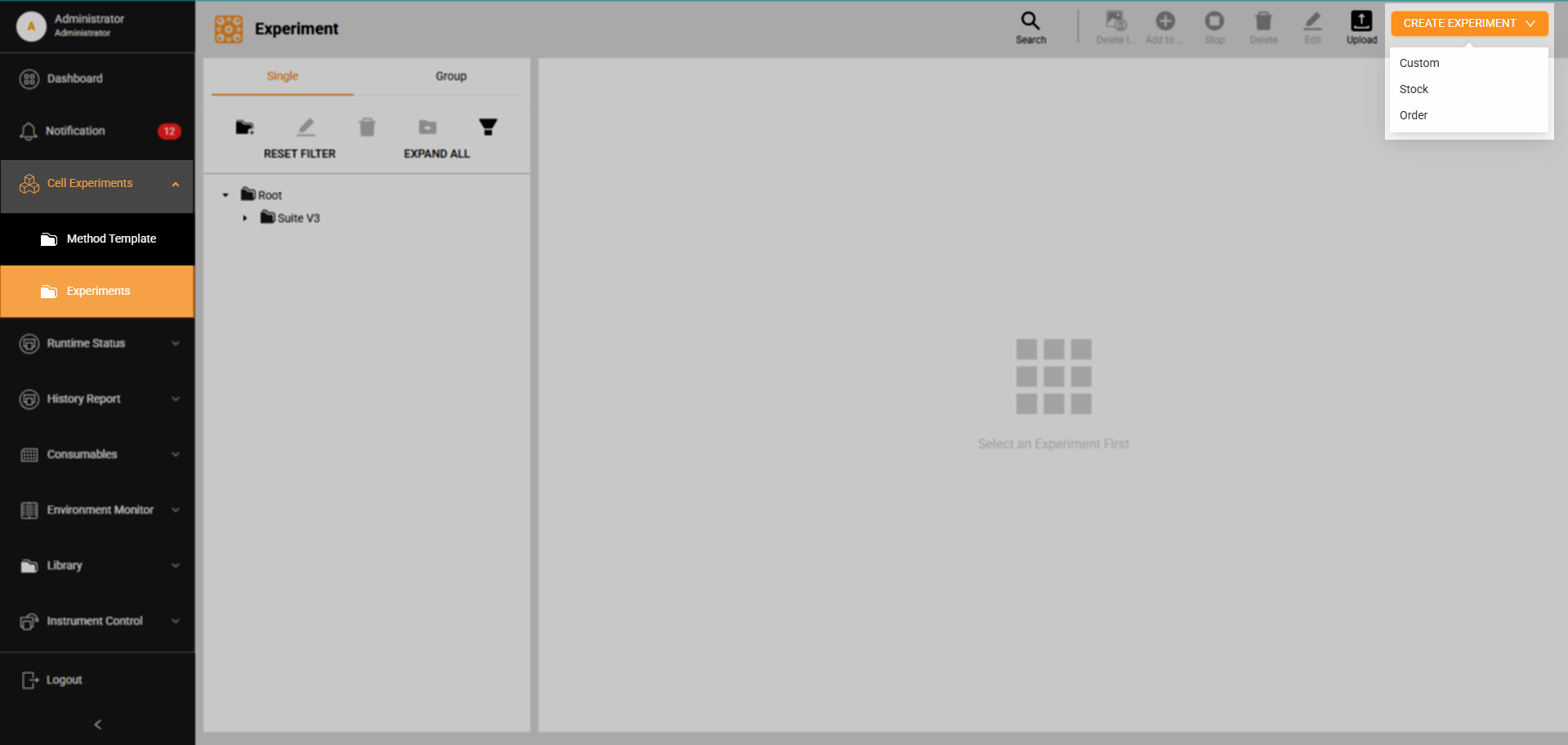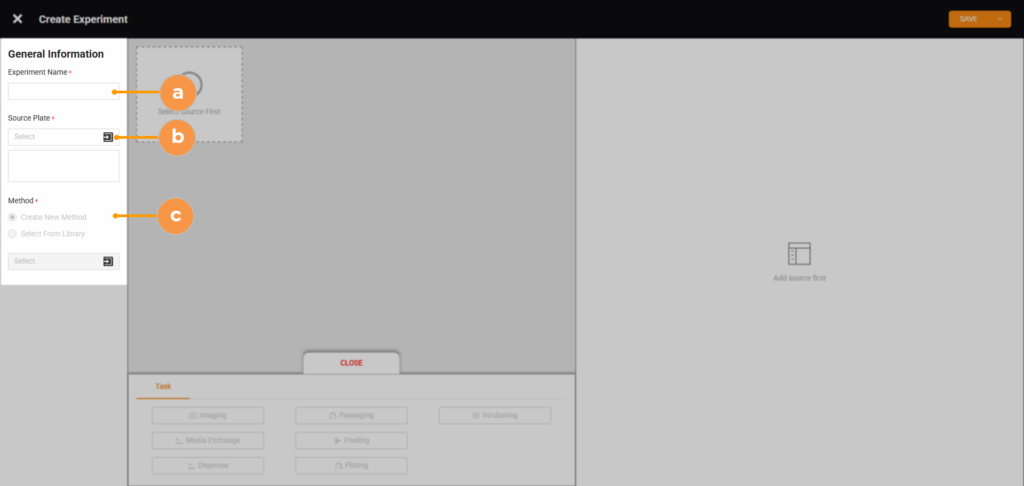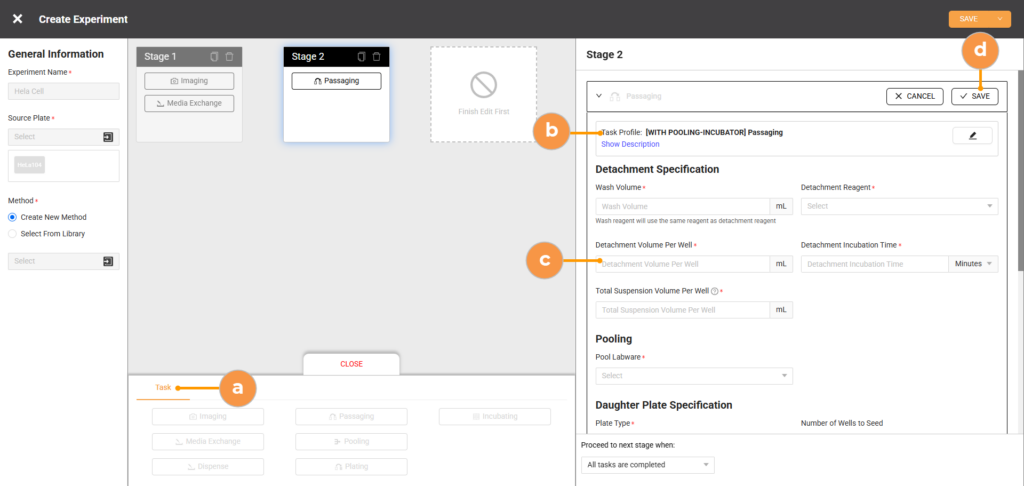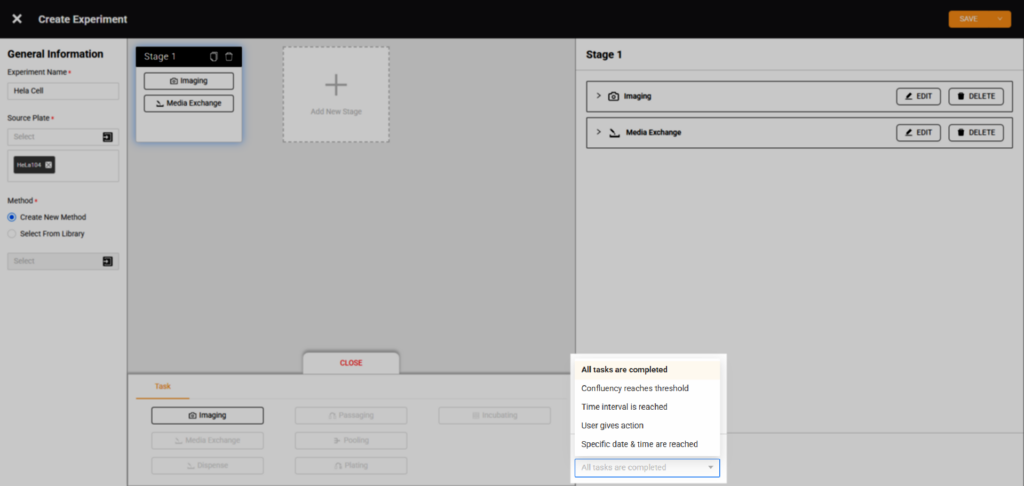How to create new experiments
- In Cellmatic Suite, go to Cell Experiments > Create Experiment, and select one of the options below:
- Custom: Designs an experiment from scratch.
- Stock: Maintains a cell line continuously using a template.
- Order: Generates a cell plate using a template.
- Fill out the General Information column on the left column.
- Enter a descriptive name for your experiment.
- Select the source plate from the Inventory Library—single or multiple plates. Make sure to select the same type of labware.
Notes:
- Selecting a plate already assigned to an experiment will stop its current task and be assigned to this new experiment.
- Selecting multiple plates as the sources of your experiment assigns the same stages and parameters to them at once.
- Select the experiment method.
- Create New Method: Designs a new experiment method from scratch, including defining the task profiles, parameters, and conditions for each stage.
- Select From Library: Adopts an existing method from the library and applies it to this new experiment. The task profiles, parameters, and conditions of each stage are adjustable according to the experiment requirements.
- Add a task(s) to the stage. Make sure to complete the stage before adding a new one.
Notes:
- Media Exchange and Imaging tasks can be combined in one stage.
- Users can add multiple schedules within a single Media Exchange, Imaging, or Dispense task.
- Schedules within a task run sequentially, meaning each schedule must be completed before the next one begins. Therefore, the earlier schedule must not have unlimited repetitions.
- Select a task at the bottom to add to the stage.
- Media Exchange, Imaging, and Dispense: Define the execution time when adding these tasks to the stage.
- Select the task profile in the pop-up window and select OK. For the Media Exchange, Imaging, and Dispense tasks, select +Add Schedule to open the task profile window. Make sure to read the description before selecting one.
- Fill out the parameters for the automation to run correctly.
- After completing the parameters, select the Save button. You can still adjust the task profile or parameter by selecting Edit.
- Select a condition for each stage in the Proceed to next stage when dropdown menu, located on the bottom right, before adding a new stage. You can select one of these five conditions to go to the next stage:
- All tasks are completed: The experiment moves to the next stage once the current stage is complete. To use this option, the task must have a limited repetition.
- Confluency reaches threshold: The experiment continues to the next stage after achieving the confluency threshold. Do not select this option if the stage has no imaging confluency task.
- Time interval is reached: The duration that the experiment should be fulfilled before moving to the next stage.
- User gives action: The active experiment requires the user to select Continue Stage to proceed to the next stage. Refer to the Go to Next stage section for the details.
- Specific date & time are reached: The experiment continues to the next stage after the specified date and time.
- All plates are finished: This option is only available for Pooling, indicating the system has finished collecting cells from all source plates.
Notes:
- The preceding conditions may appear differently depending on the task.
- Some conditions like Confluency reaches threshold, Time interval is reached, and Specific date & time are reached require unlimited repetitions.
- Repeat steps 3-4 to add new stages and tasks to your experiment.
- Select one of the following options to store your experiment:
- Save: Stores your experiment.
- Save to group: Stores your experiment in a particular group. The group must be created before setting up the experiment.
- Save & add new method: Stores and makes your experiment as a template.
Note: Tasks in different stages are executed sequentially, meaning the system completes tasks in one stage before moving on to the next.
Updated on April 10, 2025
FORMULATRIX® is proudly powered by WordPress



